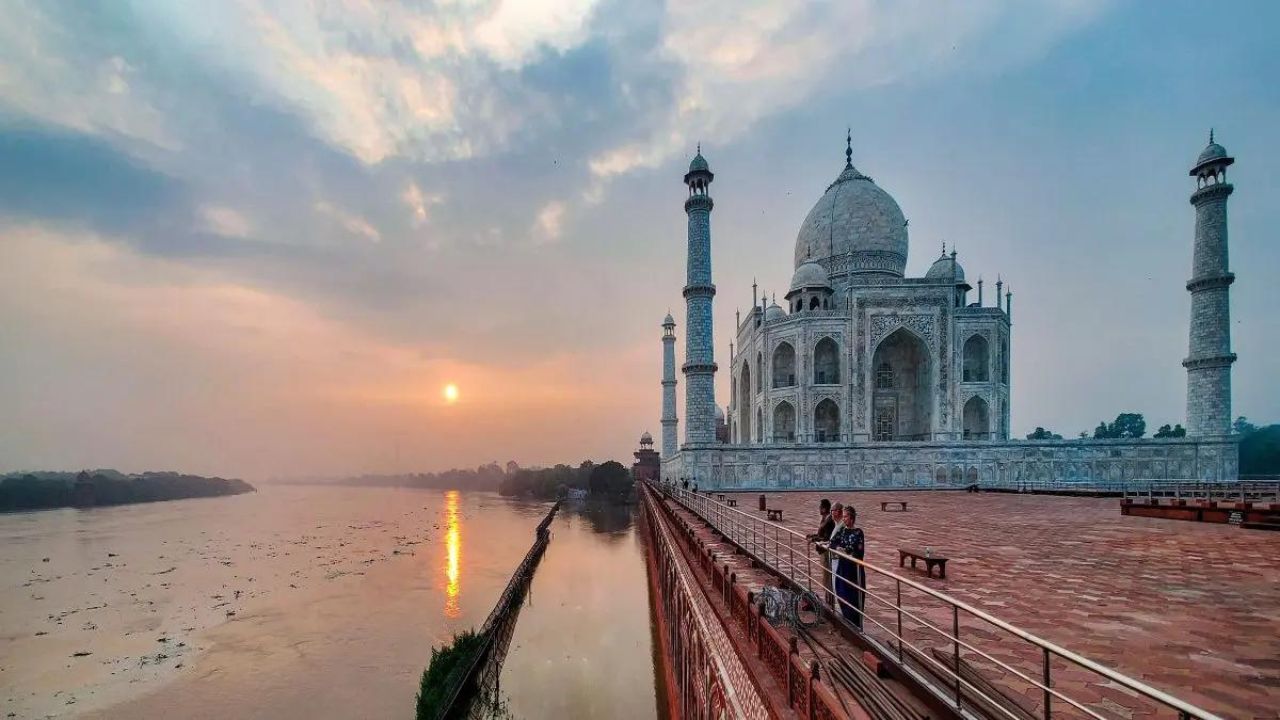Flooding has caused widespread devastation in northern India, with the iconic Taj Mahal being one of the latest landmarks to be affected. The Yamuna River, which flows past the Taj Mahal, has reached its highest level in recorded history, and floodwaters have lapped at the compound walls of the monument.
While the Taj Mahal is not in immediate danger, the flooding is a reminder of the threat that climate change poses to cultural heritage sites. The Yamuna River is one of many rivers in northern India that are experiencing increased flooding due to rising temperatures and changing rainfall patterns.
The flooding in northern India has also had a devastating impact on human lives. In the state of Uttar Pradesh alone, more than 100 people have been killed and hundreds of thousands have been displaced. The flooding has also caused widespread damage to infrastructure and crops.
The recent flooding in Himachal Pradesh is another example of the devastating impact that climate change is having on India. In the past week, heavy rains have caused widespread flooding and landslides in the state, killing at least 40 people and displacing thousands more.
The flooding in Himachal Pradesh has also caused extensive damage to roads, bridges, and other infrastructure. The state’s tourism industry has also been hit hard, as many popular tourist destinations have been closed due to the flooding.
The flooding in northern India is a wake-up call for the country and the world. It is a reminder that climate change is a real and present danger, and that we need to take urgent action to reduce our emissions and adapt to the impacts of climate change.
The Impact of Climate Change on Flooding in India
Climate change is a major factor contributing to the increased frequency and severity of flooding in India. Rising temperatures are causing the glaciers in the Himalayas to melt, which is leading to increased water flow in rivers. In addition, changing rainfall patterns are causing more intense rainfall events, which can lead to flash flooding.
The effects of climate change are already being felt in India, and they are likely to get worse in the future. The country is projected to experience more frequent and severe floods, as well as other extreme weather events such as droughts and heat waves.
These changes will have a significant impact on people and infrastructure in India. Floods can displace people from their homes, damage property, and disrupt livelihoods. They can also lead to the spread of disease and the contamination of water supplies.
The government of India is taking some steps to address the problem of flooding. However, more needs to be done to reduce emissions and adapt to the impacts of climate change.
What Can Be Done to Prevent Future Flooding?
There are a number of things that can be done to prevent future flooding in India. These include:
- Reducing emissions of greenhouse gases, which will slow the rate of climate change and help to reduce the frequency and severity of floods.
- Building more resilient infrastructure, such as flood-resistant dams and levees.
- Improving early warning systems, so that people can be evacuated from flood-prone areas in advance of a disaster.
- Educating people about the risks of flooding and how to prepare for them.
By taking these steps, India can reduce the risk of flooding and protect its people and heritage from the devastating effects of climate change.
The flooding in northern India is a reminder of the urgent need to address climate change. The government of India and the international community need to take bold action to reduce emissions and adapt to the impacts of climate change. Only by doing so can we prevent future disasters like the one that has recently struck India.








